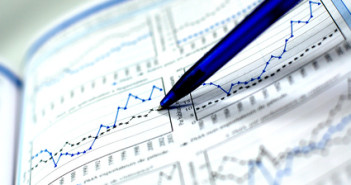Prior to the world economic crisis that started in 2008, most traders paid very little attention to the LIBOR rate. Then, the rate shot up and LIBOR made headlines around the world. So, just what is the LIBOR rate and why should you care about it as a trader?
What does LIBOR mean?
LIBOR stands for London Interbank Offered Rate, and measures the average rate of interest for short-term loans between banks. These loans are unsecured, so a bank making a loan to another bank is taking on risk. If the bank defaults or goes under, then the other bank is left with significant losses. There are actually a number of different LIBOR rates, reflecting different lending periods. These range from overnight LIBOR rates – the rates that made the headlines in 2008 – all the way through to one-year rates.
Why did LIBOR rise in 2008?
The dramatic rise in LIBOR rates during the economic crisis came about because banks could not adequately evaluate the risk of the short-term loans that they were making to each other. This was because they did not understand the quality of other banks’ core debt holdings – and in many cases did not understand their own risk either.
A Guest Post by FXTM
This was primarily due to subprime mortgages issued in the US market. Because of lack of appropriate regulation and excessive risk-taking on the part of banks, many of these mortgages were issued to people who had no possibility of repaying them. This by itself was serious, but some investment banks then combined these subprime mortgages with other safer debts, creating and reselling new financial instruments that essentially put good debt and bad debt into a single pot. This was intended to reduce risk by spreading it, but in the end it polluted the good debt – and nobody knew which was which. As a result, no one knew which banks were at risk.
Why should traders care?
High LIBOR rates not only indicate significant credit risk – in other words, the possibility that some banks may become insolvent – they also create paralysis in financial markets. Because banks can no longer borrow from each other at sustainable rates, money flows seize up. This in turn leads to the possibility of further bank failures, making the initial credit concerns a self-fulfilling prophecy. At the same time, it dries up available capital for enterprises, leading to severe economic downturns as companies can no longer fund growth or ongoing operations. This again is a vicious cycle – companies pull back and go out of business, driving further economic declines and even more uncertainty and economic contraction.
Further reading: 5 Most Predictable Currency Pairs – Q3 2014
